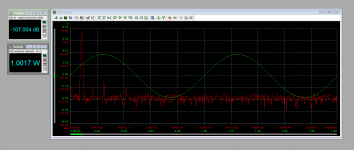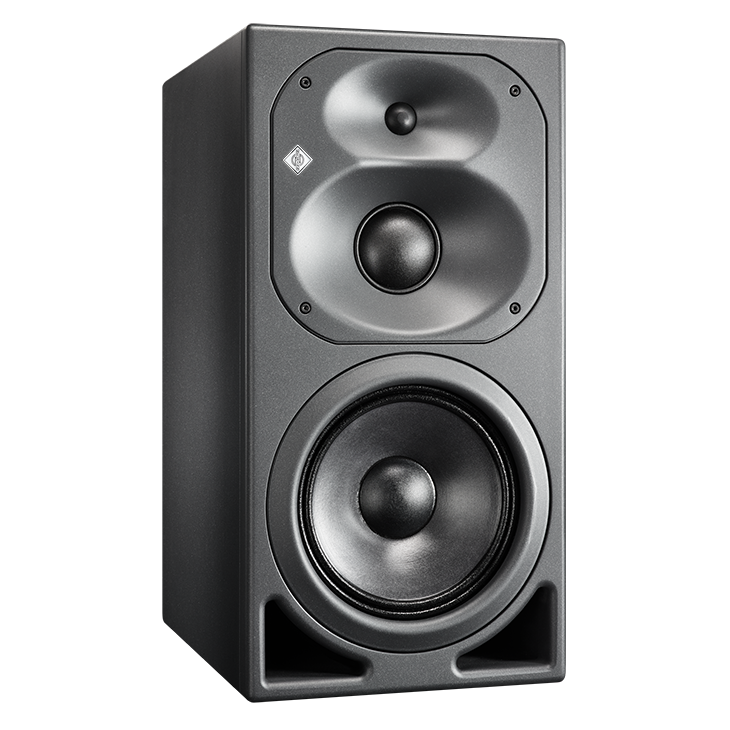This thread is about the new lineup of 3” dome mids from Bliesma. There’s 4 different versions. Alu/mag, paper, silk and Beryllium. Please feel free to share any thoughts or experience about them. Datasheets for all below:
https://solen.ca/wp-content/uploads/M74A6.pdf
https://solen.ca/wp-content/uploads/M74B6.pdf
https://solen.ca/wp-content/uploads/M74P6.pdf
https://solen.ca/wp-content/uploads/M74S6.pdf
https://solen.ca/wp-content/uploads/M74A6.pdf
https://solen.ca/wp-content/uploads/M74B6.pdf
https://solen.ca/wp-content/uploads/M74P6.pdf
https://solen.ca/wp-content/uploads/M74S6.pdf
Last edited:
Allow me to dream.
D'Appolito configured Line Array (folded and driver cut-off tuned) Open Baffle Dipole with BlieSMa T25B/D-6 tweeter and M74B midrange in a Wave-guide to match the dispersion of 6-8 pcs Purifi PTT6.5W0* drivers. 😀
D'Appolito configured Line Array (folded and driver cut-off tuned) Open Baffle Dipole with BlieSMa T25B/D-6 tweeter and M74B midrange in a Wave-guide to match the dispersion of 6-8 pcs Purifi PTT6.5W0* drivers. 😀
One loudspeaker to rule them all... or something like that 🙂. On a more serious note, I hope expanded measurement review is on the way of all M74. I don't have the setup or equipment yet to do this myself yet. But the A & P version looks interesting if one wants to save a few bucks.
The good thing about the A is that its critical breakup happen beyond 10kHz.
One concern I have are the IMD measurement of the A/P/B, the only one which might get better IMD data is the S. The only cure is to use 4th order filter on the A/P/B and cross them around 2.5kHz, this should push the M74B's peak at 14kHz down from 107dB to roughly 35dB which is
down 62dB from the nominal 97dB line, that should put the breakup at similar H2 distortion levels - we can hope. The same approach fore the M74A, the peak is at 12kHz with an amplitude of 109dB, 4th order filter should push this down to about 59dB, so down roughly 50dB.
Looking at the M74P, the breakup happens at 6.5kHz and its amplitude is 107dB. 4th order and we can only reach 1.5 octave above our crossover of 2.5kHz which is equivalent to -36dB, so: 107-36 = 71dB which is a difference of only 24dB.
Looking at the M74 range from this perspective and I rank the drivers as
1st: M74B
2nd: M74A
3rd: M74S
4th: M74P
The good thing about the A is that its critical breakup happen beyond 10kHz.
One concern I have are the IMD measurement of the A/P/B, the only one which might get better IMD data is the S. The only cure is to use 4th order filter on the A/P/B and cross them around 2.5kHz, this should push the M74B's peak at 14kHz down from 107dB to roughly 35dB which is
down 62dB from the nominal 97dB line, that should put the breakup at similar H2 distortion levels - we can hope. The same approach fore the M74A, the peak is at 12kHz with an amplitude of 109dB, 4th order filter should push this down to about 59dB, so down roughly 50dB.
Looking at the M74P, the breakup happens at 6.5kHz and its amplitude is 107dB. 4th order and we can only reach 1.5 octave above our crossover of 2.5kHz which is equivalent to -36dB, so: 107-36 = 71dB which is a difference of only 24dB.
Looking at the M74 range from this perspective and I rank the drivers as
1st: M74B
2nd: M74A
3rd: M74S
4th: M74P
I only build active speakers so corrections are simple without adding anything in the signal path.
Correction is not an issue and can easily be done, the concern here was how far down each cone breakup can be pushed with conventional means. That is to say passive or analog active filter. I think, nay, know that analog/passive is of great concern for many user - me included. Fully digital on a home cinema situation is probably fine just like class D will be. For critical listening to stereo and music, probably not 😀, Just like you'd probably not use a fully differential 300B tube amp on each and one of your loudspeakers to view a movie.
If you have a crappy DSP system I would agree. But I developed one that could rival any system on the market in 2 channel unity mode hooked up to passive speakers. But also has the ability to do DSP up to 4 channel. So that’s not the situation I’m in.
Total system THD+N here. Beats pretty much everything else out there by at least 30dB.
Total system THD+N here. Beats pretty much everything else out there by at least 30dB.
Attachments
I make my own DSP amps.They use Ravenna AES67 audio over IP so unlimited units can be clock synced. Each one has 4 channels of DSP (3 Purifi 1ET400A modules inside, and an XLR sub out for a powered sub) So good for a 3 way and sub each. Finally got Trinnov and Storm Audio on board with the Ravenna. So with their 32 channel processors combined with my DSP amps up to 128 drivers can be actively driven in a single home theatre. With audio quality on par with the best of the best 2 channel dac’s and amps to each driver. The amps build into the wall and have fibre optic Ethernet inputs. So there’s very short speaker wire runs to the drivers.
All my speaker builds are in-walls.
All my speaker builds are in-walls.
Last edited:
With DSP you can correct the on- axis but that affects the off axis.
So dispersion is tied to whatever DSP correction you want. Supercomputer or ASIC is doesn’t matter.
I care for dispersion so the paper variant is the one I will choose; and buy; based on the measurements provided by Bliesma, thus far.
it has the best dispersion out to 3 to 4 KHz; which is where I would like to use it.
if I only need a driver to 2K I would choose another (larger) driver which of course means I will go louder/cleaner on the low end eg. To 150-300Hz
My scientific while **** guess is that they measure all very similarly in terms of HD and IMD in the low end; and good down to 400-500Hz; and acoustic LR2/LR4 depends on how loud you want to play.
So dispersion is tied to whatever DSP correction you want. Supercomputer or ASIC is doesn’t matter.
I care for dispersion so the paper variant is the one I will choose; and buy; based on the measurements provided by Bliesma, thus far.
it has the best dispersion out to 3 to 4 KHz; which is where I would like to use it.
if I only need a driver to 2K I would choose another (larger) driver which of course means I will go louder/cleaner on the low end eg. To 150-300Hz
My scientific while **** guess is that they measure all very similarly in terms of HD and IMD in the low end; and good down to 400-500Hz; and acoustic LR2/LR4 depends on how loud you want to play.
Last edited:
That’s right you can’t compensate for dispersion patterns with DSP. You can with special materials though. Which is what I use with my in-walls.
You can’t evaluate drivers in a system. By that I mean you can’t blame the driver if you liked or didn’t like it in your system.
You are right one needs to pay special attention to baffle (or baffleless) design and driver placement and anything nearby (baffle dimension and cabinet depth and shape) and what’s behind or in front or to the side of the speaker) or even the mixing console and huge desk in front of the speakers because they affect 360 degree radiation, and crossover and room or lack thereof affects the sound. I’m not saying to impossible what I’m saying that is a matter of balance and tradeoffs and there is no perfect one speaker to rule them all.
All 4 variants are great. Depending on what I want to use on the low end and the top end as part of a 3 or 4 way these are all possible.
Thanks Stanislav for bringing these to market for the OEM and DIYer.
You are right one needs to pay special attention to baffle (or baffleless) design and driver placement and anything nearby (baffle dimension and cabinet depth and shape) and what’s behind or in front or to the side of the speaker) or even the mixing console and huge desk in front of the speakers because they affect 360 degree radiation, and crossover and room or lack thereof affects the sound. I’m not saying to impossible what I’m saying that is a matter of balance and tradeoffs and there is no perfect one speaker to rule them all.
All 4 variants are great. Depending on what I want to use on the low end and the top end as part of a 3 or 4 way these are all possible.
Thanks Stanislav for bringing these to market for the OEM and DIYer.
The advantage I have compared to most speaker builders is I build custom speakers for the environment they’re actually used in. Rather than trying to make a speaker that performs best in the average environment it will be used in. So what’s best can be customized to the environment. Because of that the B model is my choice because I know from experience that beryllium dome will sound the best.
I make my own DSP amps.They use Ravenna AES67 audio over IP
What modules are you using for Ravenna? I was thinking of going this route but with 20ch available now on the Altitude 16 I might not bother.
I’m using the Merging Zman for the digital interface.
https://www.merging.com/assets/img/merging/products/zman/Merging Technologies - ZMAN Brochure.pdf
And I played a major part in making the Zman come into existence in the first place. It was a conception I came up with. Then convinced Merging to adopt. Then from there it was on to Storm Audio and Trinnov to understand the advantages. Which they did, and now have fully adopted.
https://www.merging.com/assets/img/merging/products/zman/Merging Technologies - ZMAN Brochure.pdf
And I played a major part in making the Zman come into existence in the first place. It was a conception I came up with. Then convinced Merging to adopt. Then from there it was on to Storm Audio and Trinnov to understand the advantages. Which they did, and now have fully adopted.
Last edited:
From what you can see, Be's mid is almost 3db more sensitive, makes your amp twice as powerful (good for me that I use DHT tube amps with 7 or 8 watts), and has the first mode of break almost 4kz higher than Al's. I think they are good advantages in certain cases. Then there is the subjective part. Whoever who cannot buy Be's may find that it is not worth it.
Member FoLLgoTT already cloned the KLH: look for the link Waveguided three way under his posts. BTW: very similar to the MBrennwa collaborative Monkey Coffin project.
Aha!! now I see this answers my question about the 3" dome mids. It appears they exist and are available; its just that the bliesma website doesn't list anything other than their tweeters as yet.
spoke too soon, only on backorder and wow, that's an eye-watering price for the Be version.
spoke too soon, only on backorder and wow, that's an eye-watering price for the Be version.
Last edited:
The advantage I have compared to most speaker builders is I build custom speakers for the environment they’re actually used in. Rather than trying to make a speaker that performs best in the average environment it will be used in. So what’s best can be customized to the environment.
Well that’s the advantage of DIY; and what many people like to do.
What’s really difficult is building a speaker that sounds great everywhere and anywhere; and is smaller and lighter and plays louder (or cleaner) than other speakers, and cheaper too.
Last edited:
- Home
- Loudspeakers
- Multi-Way
- Bliesma M74 series 3” dome midrange lineup

